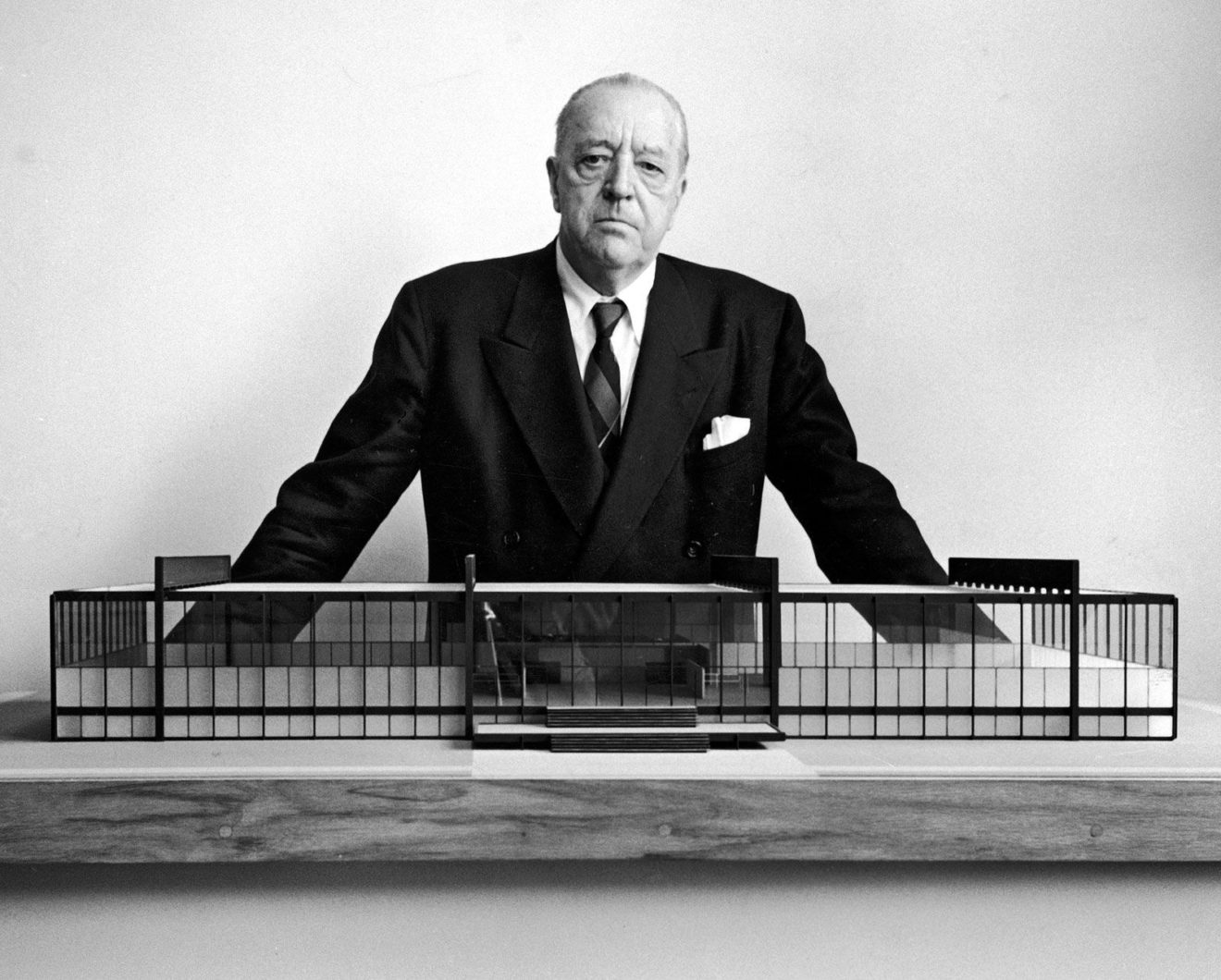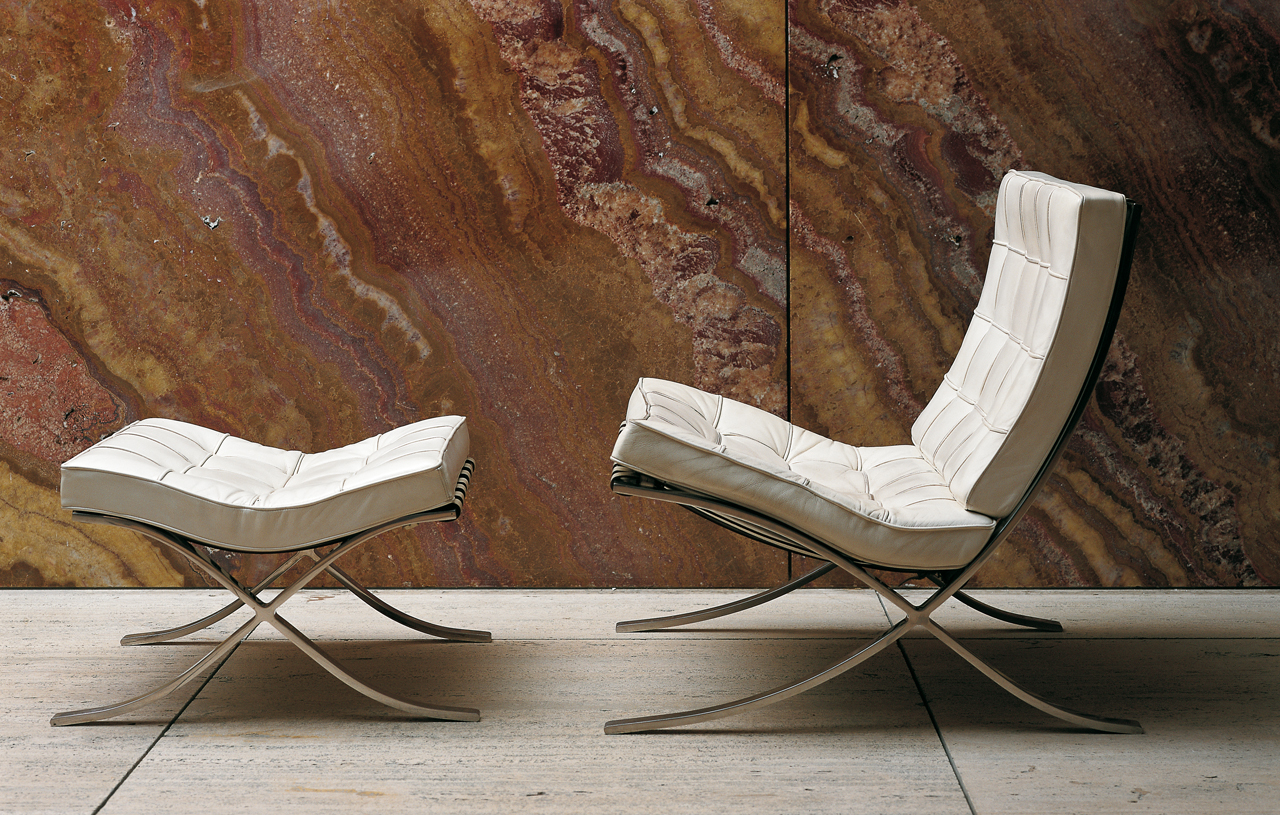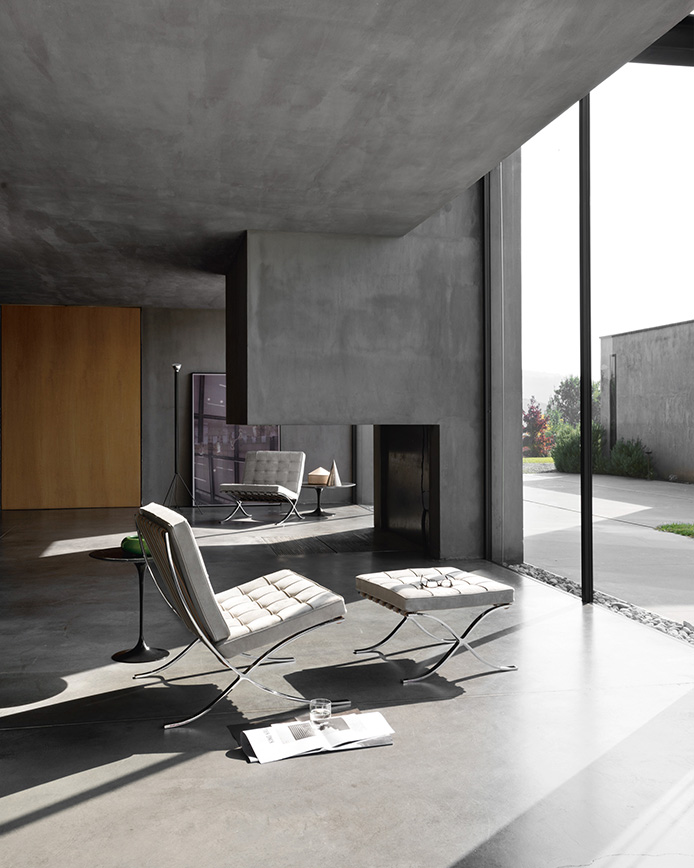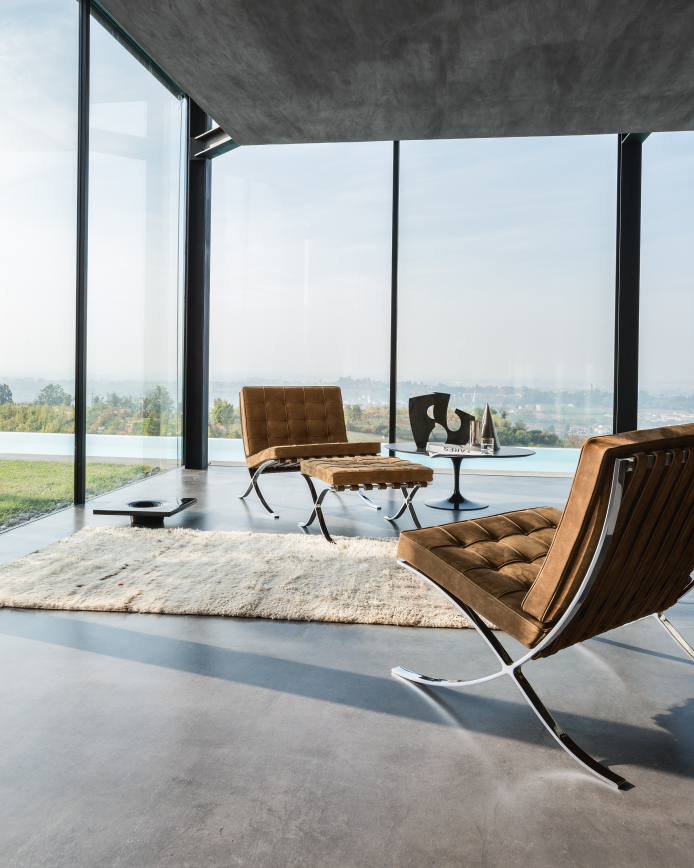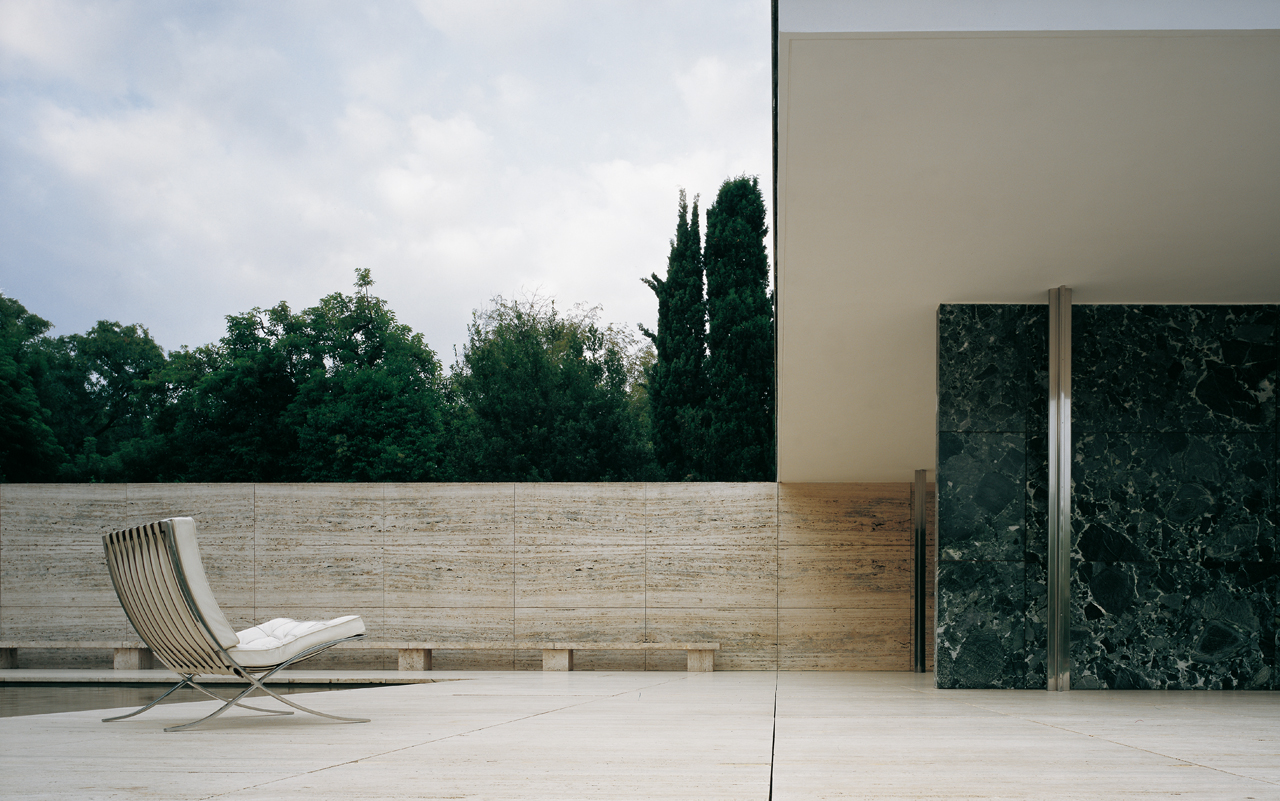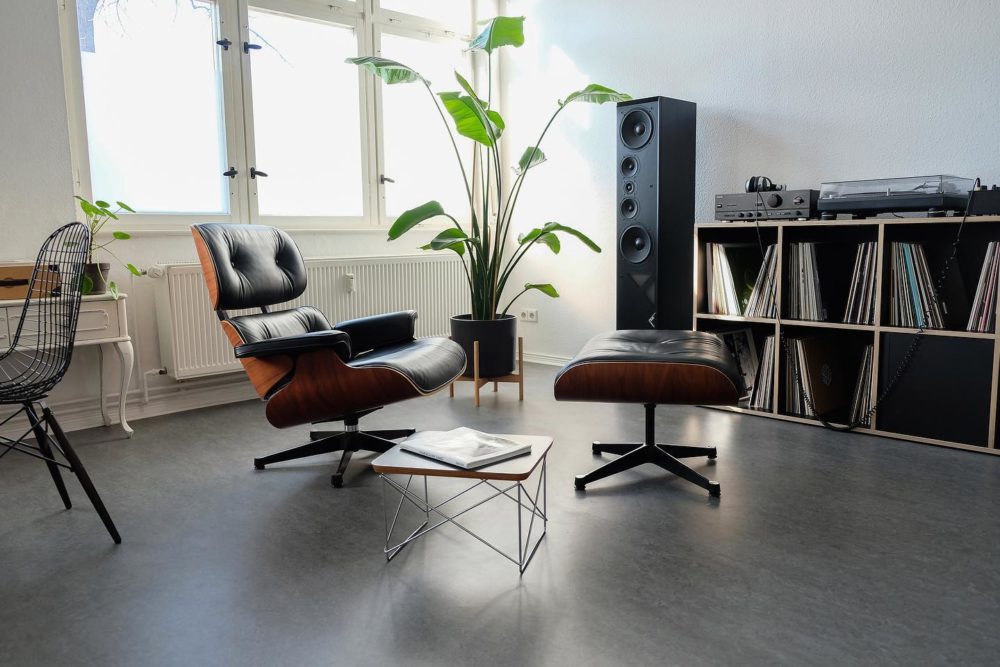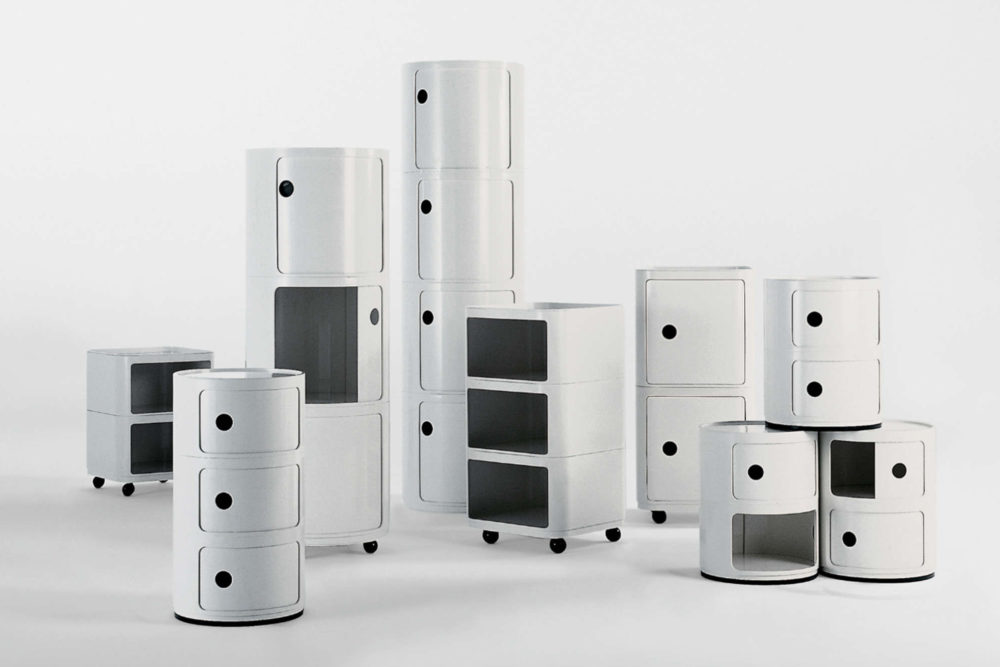Barcelona Chair
German-born architect and furniture designer, Ludwig Mies van der Rohe, is known for some of the most recognisable designs of the 20th century. Alongside interior designer, Lilly Reich, he designed the Barcelona Chair for the German Pavilion at the Barcelona International Exposition of 1929.
The Pavilion itself was also designed by the pair and was the site of the exhibit’s opening ceremony where the Barcelona Chair was to offer a luxurious and comfortable seat for King Alfonso XIII of Spain. As Mies van der Rohe said of the occasion, “the government was to receive a king…the chair had to be…monumental.”
As an influential proponent of the modernist movement, Mies intended for the Barcelona Pavilion to be bare; the building itself was to be the exhibit accompanied only by a single sculpture and the Barcelona Chair. The Pavilion remains an important building in modernist architecture today, known for its simple form and unusual use of extravagant materials – marble, golden onyx and travertine. Created as a temporary exhibition space, the Pavilion was dismantled the year following the exposition, but was reconstructed between 1983-86 by a group of Catalan architects using Mies’ original plans.
The refinement of line and simple elegance achieved by the Barcelona Chair are characteristic of Mies van der Rohe’s highly refined architecture. Supported by two chrome-plated flat steel bars – from the side a single curve forms the backrest and front legs, which crosses a subtle S-curve of the opposing bar forming the seat and back legs. The polished chrome of the frame is hand-ground and hand-buffed to a mirror finish. Upholstered with 40 individual leather panels, cut, hand-welted and hand-tufted with leather buttons produced from a single cowhide.
In 1930, Mies van der Rohe became the final director of the Bauhaus, where he taught architecture, eventually overseeing its closure in 1933. After emigrating to the United States in 1937 he became head of the architecture school at the Illinois Institute of Technology, where one of his students was Florence Schust, who later married Hans Knoll. Florence Knoll always credited Mies van der Rohe as her most influential instructor and in 1948, Knoll Associates was granted exclusive rights to produce his furniture, where his designs remain in continuous production today.

